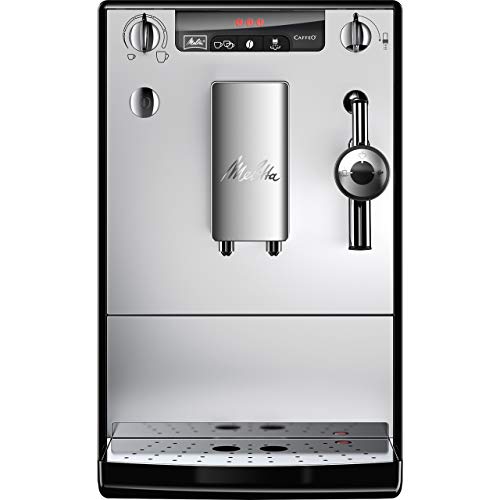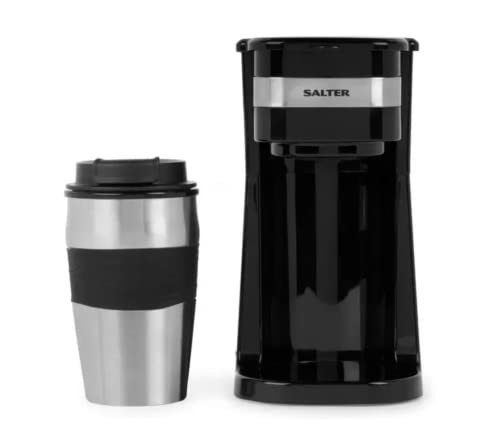일대기영상 The Reasons Machine Coffee Is Everywhere This Year
페이지 정보

본문
 What Goes On Inside a Machine automatic coffee machines Maker?
What Goes On Inside a Machine automatic coffee machines Maker?Coffee machines make it simple to take a hot cup of joe at home. Many of the most well-known models come with a programmed clock, and even a built in grinder.
Sensors regulate the heating element that circles around a warming plate once you switch on the power. It also has an aluminum water tube that goes through it.
Cold-Water Tube
A machine coffeemaker is a device that takes the water you pour in and turns it into coffee. This is accomplished by boiling water and pushing it through a process that creates high pressure. These machines can use up to 15 bar of pressure in comparison to coffee percolators that only operate at a single bar.
This reservoir looks like an empty bucket that is located at the bottom of the machine. It is where the water is stored to make your beverage. The reservoir has a hole at the bottom. It connects to the tube in the heating element on one side, and to an insulated tube running from the bottom of your machine up to the tap on the other.
When you turn on your machine, the water inside the reservoir flows into the heating chamber and the thermostat instructs it to heat up. As the water warms, it expands. This causes a screen to move beneath a portafilter, which is filled with espresso and tamped. The pressure causes the screen to pierce through the filter and let the espresso into your cup.
The espresso that comes from your machine is a rich, delicious beverage that can come with different levels of acidity based on the kind of beans you choose. If you notice that your brew is unpleasant, try switching to an alternative filter paper or a coarser ground coffee. If the issue persists, you should call an authorized technician to carry out a deliming process. This problem is usually caused by lime scale.
Hot-Water Tube
The insulated white tube in the base of your coffee maker is referred to as the hot-water tub. It carries hot water from the heating chamber to the faucet on the top of your coffee maker. This water saturates your grounds, bringing the flavors into the pot of coffee you are waiting for.
Certain coffee makers have the ability to keep the water warm so that it's ready to drink when you wake up. This is done by using a heater to generate some steam. The steam is directed towards the spout to ensure that the coffee machine brands remains warm until you are ready to pour it.
Although it could appear that a coffee machine is complicated and expensive The majority of models are easy to use and have few moving parts. A regular cleaning and regular use should keep your machine in excellent condition for years to come.
Many coffee machines that have integrated grinders allow you to add ground coffee from a container, then lock the portafilter into place and then turn on the switch inside to start the coffee brewing process. When the switch is flipped the pump will begin to pressurize the water inside the heating chamber until it's about 220 psi of pressure.
One of the biggest frustrations when making coffee machines prices is the need refill the reservoir frequently. Some manufacturers have created coffee makers that connect directly to a water line which allows you to skip the reservoir completely. There are kits available for those who wish to make it their own. They can change any machine to an espresso maker that connects directly to a household water line. The process is a bit more complex and requires drilling holes in your machine to accommodate the adapter. This could weaken the structure of your coffee maker and lead to cracking in the areas where holes were drilled. It's recommended that you purchase a specially-built coffee maker that is specifically designed to accept an open water line for the best Home coffee maker results.
Resistive Heat Element
The heater is a piece metal that has a special kind of electrical resistance. It blocks current flow, but without stopping it entirely and a portion of the energy resisting it is turned into heat. This is the way that the boiler of your coffee maker is heating the water.
The heating element is located on the left side of the machine's base. It looks like the filament of a lightbulb, or the element of an electric toaster. It consists of an aluminum extrusion that has two sections, a tube that allows water to flow through and the heating element itself that is resistive (Check the video here). The coiled wire is heated due to the resistance it has.
When you turn your coffee maker on the element begins heating the aluminum water tube until it starts to boil. The bubbles will rise up through the white tube, and then be sprayed over your coffee beans using the shower head. The water sprayed gets the essential oil essence of the ground coffee beans on its way down, and also has caffeine.
If your coffee maker isn't release hot water, it's most likely because the pressure switch or heating element thermostat is not working properly. Both of these can be checked with a multi meter by using the continuity test. You connect one of the poles to the electrical connection and the second to the flange body and it should display a number below 1. If there is no reading then it is a sign that the thermostat or switch need to be replaced.
The reservoir or water pump is another part of your machine that could cause problems. It could become blocked by lime, so you'll need to run water and descaling agent through it.
Warming Plate
A warming plate is an heated metal surface that keeps the coffee warm after it has been prepared. This feature is popular with diner coffee drinkers and can be a useful addition to a home kitchen. However the warming plate can get rusty quickly and alter the taste of the coffee, making it crucial to clean it regularly. Cleaning a coffee maker heating surface is best compact coffee machine done using an oxalic-based mixture and water.
Oxalic acid is a powerful cleaning agent that can be used to remove rust from pipes, sinks, gas stove burners, and a variety of other household items. It is an extremely effective method of cleaning the rusty warming plate in your coffee maker. It can be purchased from most hardware stores. This product could cause serious burns and injuries in the event that it is not handled properly.
If you're planning to clean a coffee maker with rust heating plate, first ensure that the coffee maker is disconnected. This will prevent any possible damage caused by the heat of the cleaning products. You should also wear rubber gloves because the oxalic acid can be extremely rough on your skin.
Next, sprinkle some white vinegar over the rusty area of the coffee maker's heating plate. This will cause chemical reactions and dissolve the rust. Then clean the area using the rag or brush until it is completely clean. You may need to repeat this process multiple times if your coffee maker is heavily rusted. Make sure that the oxalic acid has fully evaporated before you plug the amazon coffee machine maker back in and start using it again.
Aluminum Water Tube
The machine will start making coffee as soon as you start it up. It appears to be it's easy enough, but there is plenty going on the machine to transform the scoops of ground and some water into a steaming hot drink.
The cold water is poured into the aluminum tube underneath the resistive heating element via an opening at the bottom of the reservoir. The aluminum tube begins to heat up and when it is at its boiling point, bubbles form that push the water partway up the white tube in the center of your coffee maker.
The hot water squirts out of the top of the tube into the perforated disc that is called the shower head. (Or basket in some machines). The hot water is sprayed onto the coffee grounds, absorbing its oil-based essence.
Then the water flows down over the coffee and back up through the filter to your pot. This is all accomplished by the oscillating pressure created by the pump. The shearing force generated by the expanding and contracting bubble boundaries removes the coffee ground particles from the water, leaving behind an espresso-like drink that is strong and smoky.
Keep in mind that your machine is dependent upon many different components. They're all interconnected. Any one of these components that fail to function properly could affect the entire process, so if you notice any strange noises or vibrations while your machine is operating look for loose parts. Unsecure components can cause noise and weaken connections. This could cause further issues.

- 이전글15 Things To Give Those Who Are The Teaming Up With Birth Injury Attorneys Lover In Your Life 25.01.25
- 다음글How Much Do Online Mystery Box Experts Earn? 25.01.25
댓글목록
등록된 댓글이 없습니다.
